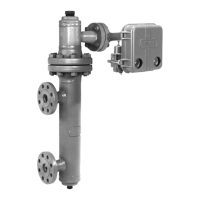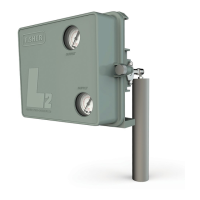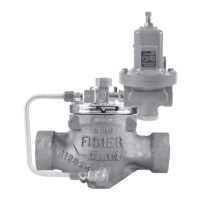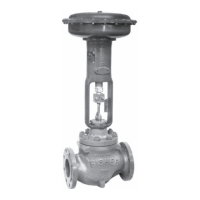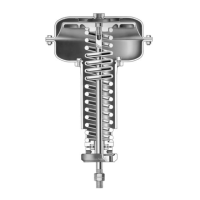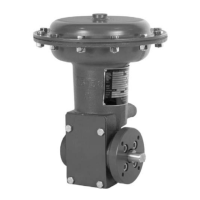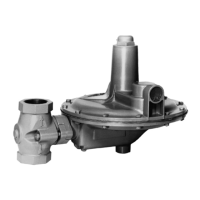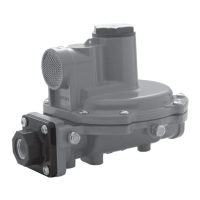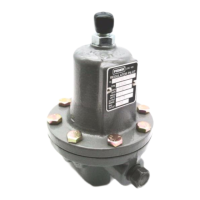2502 Series Controllers
Instruction Manual
Form 1446
November 2006
18
chamber pressure exceeds that in the inner relief
valve chamber by the amount of the relief pressure
setting, the relief diaphragm will move off the orifice
in the relief valve, and the pressure in the outer
chamber will bleed into the reset system. This action
provides quick relief of excessive proportional
pressure and reduces the time required by the
system to return to the control point.
Maintenance
The 2502 Series controllers are used in combination
with 249 Series sensors.
WARNING
Always wear protective eyewear,
gloves and clothing whenever
possible when performing
maintenance to avoid personal injury.
Personal injury or property damage
due to sudden release of pressure,
contact with hazardous liquid, fire, or
explosion can be caused by
puncturing, heating, or repairing a
displacer that is retaining process
pressure or liquid. This danger may
not be readily apparent when
disassembling the sensor or removing
the displacer. Before disassembling
the sensor or removing the displacer,
observe the more specific warning
provided in the sensor instruction
manual.
When disconnecting any of the
pneumatic connections, natural gas, if
used as the supply medium, will seep
from the unit and any connected
equipment into the surrounding
atmosphere. Personal injury or
property damage may result from fire
or explosion if preventative measures
are not taken, such as adequate
ventilation and the removal of any
ignition sources.
Check with your process or safety
engineer for any additional measures
that must be taken to protect against
process media.
Troubleshooting
When troubleshooting, open loop conditions must
exist unless otherwise stated. When monitoring the
process variable, use the most accurate level
indicting device readily available. The output signal
measuring device should have a corresponding
accuracy.
Table 3 lists some common operating faults, their
probable causes, and corrective action.
Removing Controller from Sensor
WARNING
To avoid personal injury in the
following steps, turn off the supply
pressure and carefully release any
pressure trapped in the controller
before breaking any pressure
connection. Provide a bypass for the
control device if continuous operation
is required during maintenance.
Refer to figure 14 for key number locations, unless
otherwise indicated.
1. Disconnect the supply and output pressure tubing
from the controller.
2. Loosen the hex nut (key 40) that secures the
operating arm base or pointer assembly (key 68
or 51) to the torque tube rotary shaft. Do not lose the
two link bearings (key 87, not shown).
CAUTION
If the hex nut has not been loosened
according to step 2, attempting to
remove the controller from the sensor
may bend the rotary shaft or operating
arm and linkage. Be careful that the
back of the controller case or the heat
insulator does not drop down and
bend the rotary shaft or shaft
extension.
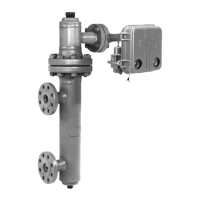
